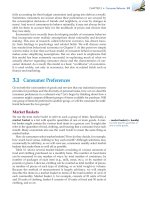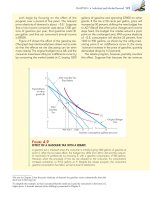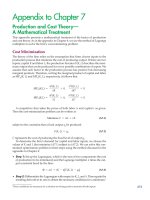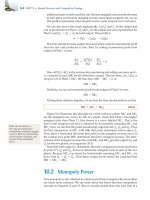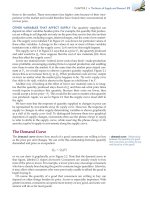(8th edition) (the pearson series in economics) robert pindyck, daniel rubinfeld microecon 134
Bạn đang xem bản rút gọn của tài liệu. Xem và tải ngay bản đầy đủ của tài liệu tại đây (89.65 KB, 1 trang )
CHAPTER 3 • Consumer Behavior 109
In addition, the price of food is $2 per unit, the price
of clothing is $10 per unit, and Julio’s weekly income
is $50.
a. What is Julio’s marginal rate of substitution of food
for clothing when utility is maximized? Explain.
b. Suppose instead that Julio is consuming a bundle
with more food and less clothing than his utility
maximizing bundle. Would his marginal rate of
substitution of food for clothing be greater than or
less than your answer in part a? Explain.
17. The utility that Meredith receives by consuming food
F and clothing C is given by U(F,C) ϭ FC. Suppose that
Meredith’s income in 1990 is $1200 and that the prices
of food and clothing are $1 per unit for each. By 2000,
however, the price of food has increased to $2 and
the price of clothing to $3. Let 100 represent the cost
of living index for 1990. Calculate the ideal and the
Laspeyres cost-of-living index for Meredith for 2000.
(Hint: Meredith will spend equal amounts on food and
clothing with these preferences.)

